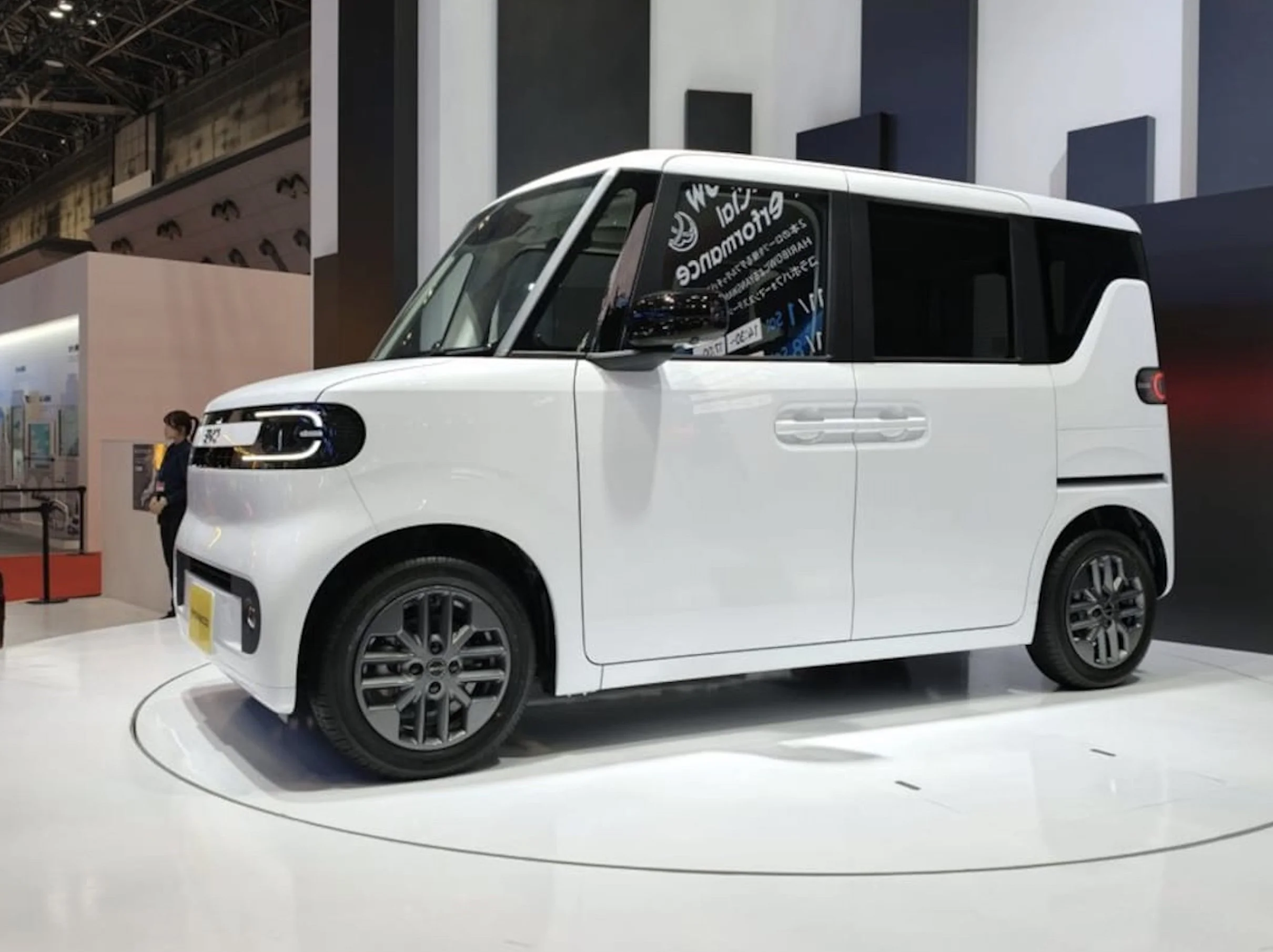BYD Unveils Kei-Sized “Racco” EV for Japan — A Real Challenge to Nissan’s Sakura?
At the 2025 Japan Mobility Show, BYD surprised everyone with the debut of the “Racco”, a kei-car-sized electric vehicle designed specifically for Japan’s ultra-compact car segment. It marks BYD’s boldest move yet into the heart of the Japanese market — a market long dominated by domestic manufacturers like Nissan, Honda, and Suzuki.
Interestingly, the name Racco closely resembles “Rakko,” the Japanese word for sea otter. That’s no coincidence. BYD has a history of using marine-themed names for its vehicles, including the Dolphin, Seal, Seagull, and Sealion. The Racco name continues that ocean-inspired tradition, symbolizing something small, intelligent, and agile — perfectly in line with the image of a friendly kei-class EV designed for Japan’s city streets.
BYD Keeping its Marine Animal Naming Convention
The Kei-EV Market and Japan’s Real Best-Seller
Despite what many might assume, Japan’s best-selling EV isn’t the Tesla Model Y — it’s actually the Nissan Sakura. Since its launch in 2022, the Sakura has quietly dominated Japan’s electric-vehicle charts, thanks to its compact size, kei-car tax benefits, and affordable pricing. It offers about 180 km of WLTC range from a 20 kWh battery, making it perfectly adequate for short commutes and errands — but hardly an exciting drive.
That’s where BYD comes in.
BYD Unveil the Racco
The BYD Racco: Compact, Clever, and Clearly Targeted
BYD’s new Racco enters the same category with nearly identical specs — a 20 kWh Blade battery and an estimated 180 km WLTC range — but with a crucial difference: BYD’s expertise in battery technology, software, and infotainment.
While the Nissan Sakura’s cabin is minimalist to a fault, the Racco is expected to bring a more connected, higher-tech experience. BYD has a solid track record of equipping even its lower-priced models with large touchscreens, robust voice control, and smartphone-grade interfaces. That alone could make the Racco more appealing to younger city drivers or families with kids, who want a little more fun and functionality in their daily drive. Elderly buyers — the traditional kei-car demographic — may not be as swayed by tech features, but this new direction shows BYD understands where the market could go next.
BYD Racco
Built for Japan, Not Just Imported to It
The Racco isn’t just a Chinese car squeezed into Japan’s kei regulations — it’s been designed specifically for Japan. It adheres to kei-car size limits (under 3.4 m long, 1.48 m wide), and most notably, uses the CHAdeMO charging standard — meaning no adapters required for Japanese EV owners. That’s an important sign that BYD isn’t treating Japan as an afterthought but as a strategic market worth adapting for.
Even the door layout shows thoughtful design, reportedly similar to domestic kei cars like the Daihatsu Tanto and Suzuki Spacia, maximizing ease of access for tight parking spaces and families.
BYD Racco
Price, Subsidies, and Practical Barriers
Expected pricing for the Racco starts around ¥2.6 million (US$17,000) — roughly on par with the Sakura. Once Japan’s national and local EV subsidies are factored in, that price could drop further, making it highly competitive in urban areas where EV ownership is growing slowly but steadily.
However, Japan’s EV infrastructure still lags behind Europe and China, and foreign EV brands face additional hurdles — limited dealer networks, smaller service coverage, and persistent consumer skepticism about Chinese-made vehicles. Despite BYD’s global success, its sales in Japan remain modest so far, largely due to these structural barriers rather than product quality.
A Glimpse of What’s Next
BYD plans to have 7–8 EV and hybrid models in Japan by 2027, positioning itself as one of the few companies actively investing in both clean-tech categories. In contrast, Toyota and Mitsubishi continue to move cautiously, with more focus on hybrids than full EVs. BYD’s CHAdeMO integration, modern design, and in-car tech show a level of adaptation and speed that Japanese giants seem hesitant to match.
A Note on Design Accuracy
Interestingly, an AI-enhanced render I created last week turned out to be surprisingly accurate once BYD revealed the final car. The proportions, lights, and overall silhouette matched almost perfectly — perhaps proof that even AI can sense where EV design in Japan is headed.
My AI Powered Prediction - Spot on?
Final Thoughts
The Racco might not revolutionize Japan’s EV market overnight, but it’s a significant step forward. It blends BYD’s advanced tech with genuine understanding of Japan’s kei-car culture — something that even established Japanese automakers have struggled to modernize.
Whether Japanese buyers are ready to embrace a Chinese-built kei EV remains to be seen. But if BYD gets the pricing, tech, and reliability right, the Racco could be the spark Japan’s slow-moving EV scene has needed.
Stay tuned to EVManJapan.com for more updates and coverage from the Japan Mobility Show.
Sources
Pandaily: BYD unveils Japan-market K-EV at Tokyo Mobility Show
The Japan Times: Japan Mobility Show coverage (Oct 29, 2025)
Reuters: BYD's mini-car ambitions may be a wake-up call for Japan
CarNewsChina: BYD Racco revealed in Tokyo for summer 2026 launch
Carscoops: BYD declares war on Japan's tiny EVs with its first kei car
Paultan.org: BYD kei EV preview with Blade battery, 180 km range
CleanTechnica: If you could buy a Japanese kei car, would you?











